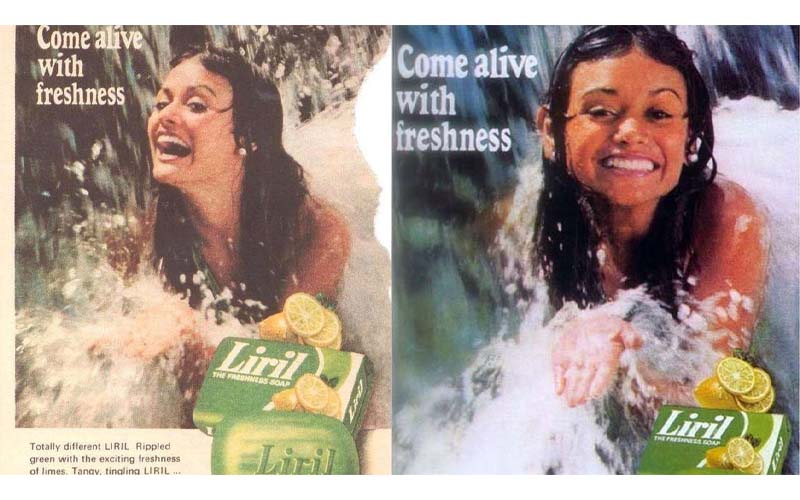

With bright eyes, a wide smile, dripping appeal, and youth, the Liril Girl changed what it meant to take a shower (and do advertising) during the 70s! Her playful antics under the waterfall made her the secret fantasy of a generation. The girls wanted to be her, the boys wanted her, she was everyone’s darling.
The Liril Girl, a brainchild of Alyque Padamse, the genius of Indian advertising, has remained the brand’s go-to advertising trope well into the 21st century because of its initial popularity.
While working at Lowe Lintas, Padamse created this carefree, young, and happy embodiment of womanhood which brought liberation and freedom to the Indian housewife watching the ad at home.
And he successfully managed to sell the soap as well.
So, not only was the Indian housewife empowered, but the ad changed the way advertisers approached their subjects. Let’s learn how.
The Liril Girl would not be here today if not for an error in judgment by Hindustan Lever.
Originally a blue-coloured soap made to target the premium price segment, the advertisement for the soap failed to make waves and created little buzz during testing at Indore and Nashik.
Cut to a change in product, transforming the blue to lime green and marketing it as India’s first lime soap, Hindustan Lever went on to look for a magician who could brand and advertise their new product.
They came to Padamse.
Research showed the team at Lowe Lintas that the only time the 70s housewife felt “free to be herself” was when she was alone in the shower. The rest of the time, she was “fettered” and “chained”, bowling to convention and tradition, being the ideal “Bharatiya Nari” that pleased everyone by having no time to herself.
The Liril Girl silently broke those fetters and succeeded in letting women play into a fantasy that sowed the first seeds of liberalisation. To put it in context, think about the opening shot of model Karen Lunel’s legs cavorting in the cold water. Tantalizing much?
What followed was a fantasy that women secretly indulged in the privacy of their personal showers, that of being truly liberated and free, not just to take a shower, but to also live according to their own terms.

With Liril, there was no harping on fair skin, no promising pimple-removing miracles, just cleanliness, freshness, and sheer joie de vivre. The brand succeeded because of that.
While other cosmetic brands promised a lot of useless skin colour-altering concoctions, Liril promised the freshness of lime and good clean skin after use, a simple advertising message for the 70s.
Did Padamse hit the bullseye with his clearcut advertising? Yes, he did.
Even today, soap companies and cosmetic brands should take a leaf out of his book and truthfully acknowledge that they really can’t change the genes for skin colour, can they?
Shot in the peak of winter in Kodaicanal, did the shivering young Karen Lunel know that she would one day become a household name?
Surely not.
Neither did Padamse know that he would be creating an iconic piece of advertising, but the soap, its legacy, and the lessons in clear-cut messaging and branding that we can learn from it have impacted indelibly those who work in this industry.
Well, that was this creative advertising agency’s take in today’s episode.
Stay tuned for more perceptive #BreakingtheAds.
It’s coming up…!